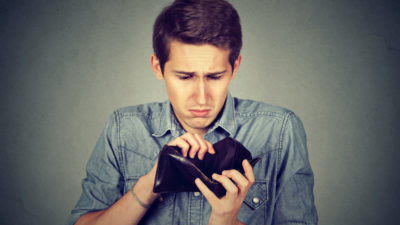There are a range of issues that have brought into question the sustainability of Canada’s oil sands industry, and key among them is inadequate infrastructure.
In particular, inadequate transportation infrastructure is creating production bottlenecks and preventing Canada’s oil producers from effectively accessing key markets. Alongside high development costs and environmental impacts, inadequate infrastructure has brought into question the sustainability of the oil sands industry.
Supply-side bottlenecks and increased costs
The lack of infrastructure is preventing the cost-effective shipping of Canada’s crude oil to its key market (the United States) and the ability of producers to effectively access emerging markets in Asia, thus creating supply surpluses, inflating costs, and preventing producers from growing production.
These infrastructure issues are becoming increasingly serious, particularly as a result of growing investment in Canada’s oil sands industry because of higher oil prices. We should see production continue to increase, placing greater pressure on transportation infrastructure and creating further supply surpluses.
In a 2011 report [link opens PDF file], Ernst & Young identified that oil pipeline capacity out of Western Canada was already close to full utilization. It also predicted that the pipeline infrastructure in place would not be adequate to transport the forecasted oil sands volumes by 2015.
Already, a lack of pipeline capacity has increased the pricing volatility of Canadian crude oil. Standard & Poor’s June 2013 report [link opens PDF file] on Canadian crude oil producers predicted that this situation will worsen unless they are able to access their most advantageous end market. In the case of Canada’s heavy oil producers — obtained from oil sands — that means the refineries on the U.S. Gulf Coast.
Standard & Poor’s went on to say that should pipeline development be delayed or cancelled, then those companies with high volumes of heavy oil in their upstream product mix will see their margins and profitability deteriorate. This outlook certainly doesn’t bode well for the majority of Canada’s oil producers, with heavy oil making up the largest proportion of their production. As the chart below illustrates, oil sands production makes up more than half of the oil produced by Canada’s top five energy companies by enterprise value.
| Company | Enterprise Value | Heavy Oil/ Bitumen From Oil Sands |
| Suncor | $62 billion | 60% |
| Canadian Natural Resources | $45 billion | 55% |
| Husky Energy | $30 billion | 39% |
| Cenovous | $28 billion | 55% |
| Encana | $18 billion | 27% |
Source data: Yahoo Finance, company filings.
Of the companies listed, it is Encana (TSX:ECA) that is least reliant upon oil sands production. But this is because a substantial portion of its production is made up of natural gas. Another company that is not overly reliant upon bitumen and heavy oil obtained from oil sands is Talisman Energy (TSX:TLM).
Those companies most exposed to this issue are those which are still going through the startup stage and developing oil sands projects. One example is Athabasca Oil (TSX:ATH), which has invested considerable capital in developing its significant bitumen reserves of 339 billion barrels of oil. But because of these infrastructure bottlenecks, companies like Athabasca may not be able to maximize their return on this investment until the transportation infrastructure issue is resolved.
The key solution is more pipelines
While rail and road transportation has taken up some of the slack, pipeline infrastructure is the only long-term solution to this problem. One of the key solutions is TransCanada’s (TSX:TRP) (NYSE:TRP) much maligned Keystone XL pipeline. The pipeline would begin at the oil distribution hub of Hardisty, Alberta and extend 1,179 miles to Steele City, Nebraska. It will have the capacity to transport around 830,000 barrels per day of oil from Canada and the U.S.
It will provide both Canadian and U.S. oil producers with access to the large refining markets located in the U.S. Midwest and Gulf Coast. It will also become the main means of shipping Canada’s oil to its key consumer the U.S., alleviating many of the existing transportation infrastructure problems in the process.
But approval for the project south of the border remains mired in a political deadlock, much of which is being driven by concerns about the environmental impact of the project. U.S. President Obama has signaled that environmental considerations will play a significant part in whether the project will be approved:
Allowing the Keystone pipeline to be built requires a finding that doing so would be in our nation’s interest. And our national interest will be served only if this project does not significantly exacerbate the problem of carbon pollution. The net effects of the pipeline’s impact on our climate will be absolutely critical to determining whether this project is allowed to go forward.
Canada’s federal minister of natural resources, Joe Oliver, is pushing for the construction of additional pipeline infrastructure that would allow Canada to diversify its oil export markets by shipping oil to its east coast refineries and allowing tanker shipments to Asia from its west coast. Canada’s oil industry could then reduce its risky key dependence on the U.S. as its primary export market for oil — the U.S. accepts almost 98% of all oil produced in Canada.
Enbridge (TSX:ENB,NYSE:ENB), TransCanada’s key rival, is also focusing on expanding its existing pipeline infrastructure in Western Canada. These expansions are focused on increasing capacity for shipping oil from Canada’s northwest to the refinery market in the U.S. midwest. These extensions could boost capacity by around 1.2 million barrels of oil a day.
Foolish final thoughts
Of the issues threatening the sustainability of the oil sands industry I’ve detailed in recent articles, insufficient transportation infrastructure is the most serious. It is responsible for creating production bottlenecks and higher transportation costs, placing increased downward pressure on sales volumes and margins.
This issue also highlights the Canadian oil industry’s perilous key dependence on the U.S. as its primary export market. But it is clear that the industry is focused on resolving this issue, which would help lower its costs and increase sales volumes over the long term. And that would bode well for increased profitability — and unlocked value for shareholders.
Motley Fool Canada’s top 2 stock ideas
Our senior investment analyst will unveil his top two stock ideas for new money now on Oct. 1. And YOU can be one of the select few investors to find out first — just click here to reserve your invitation.
Disclosure: Matt Smith does not own shares of any companies mentioned.







